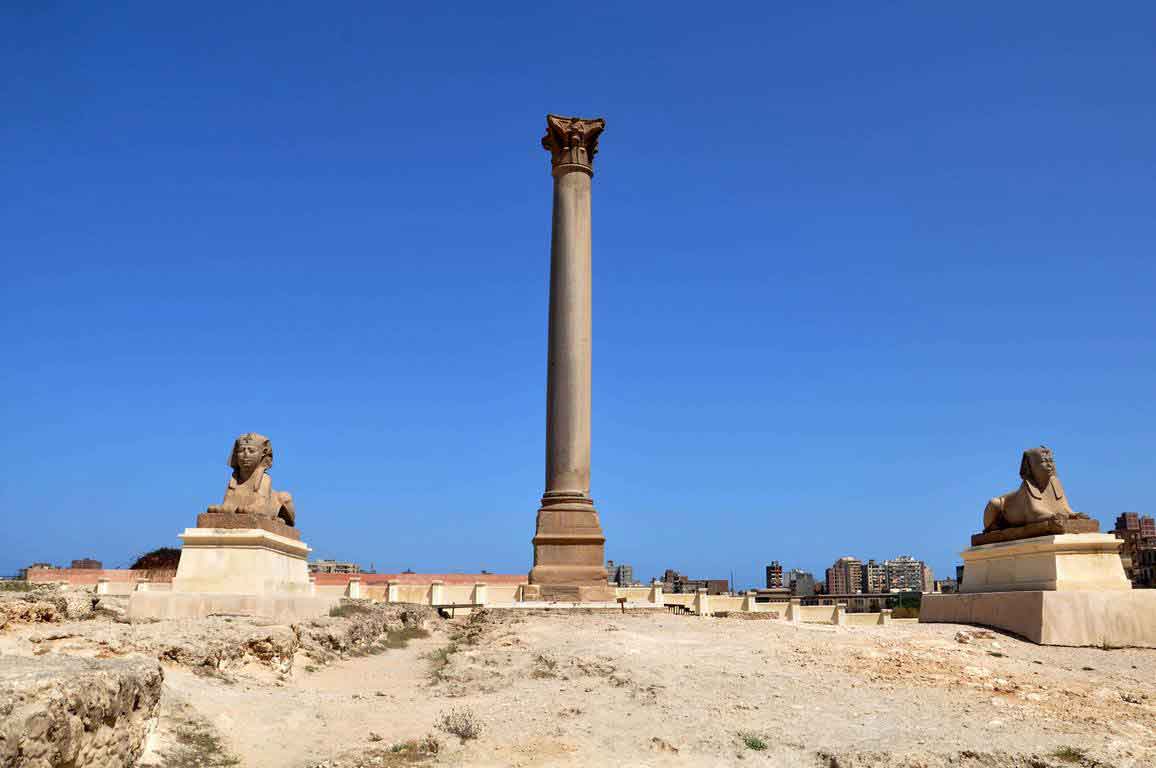
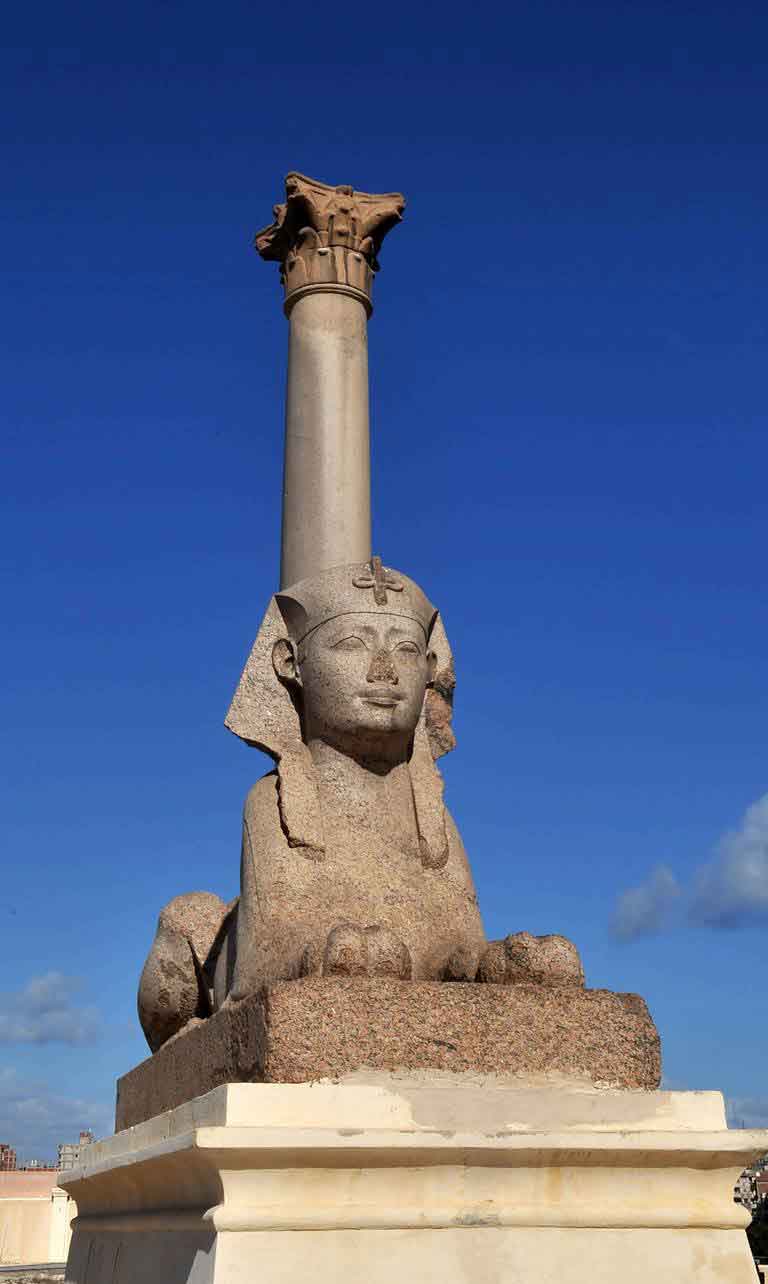
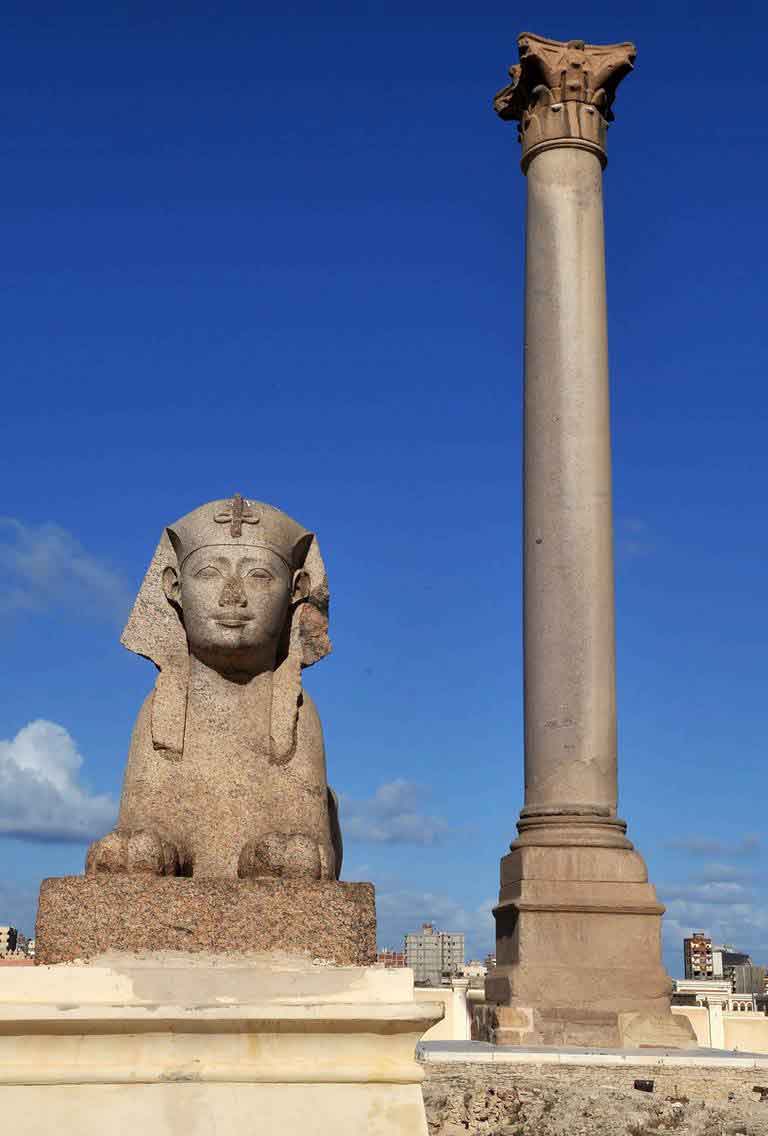
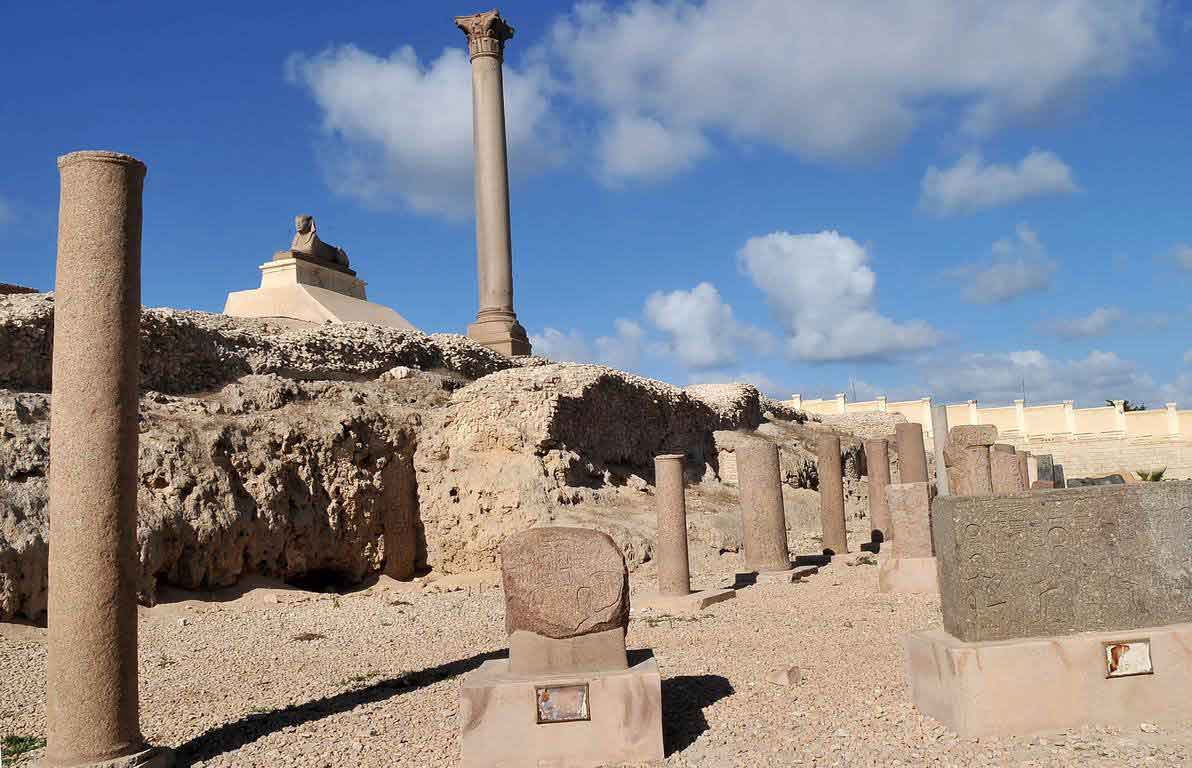
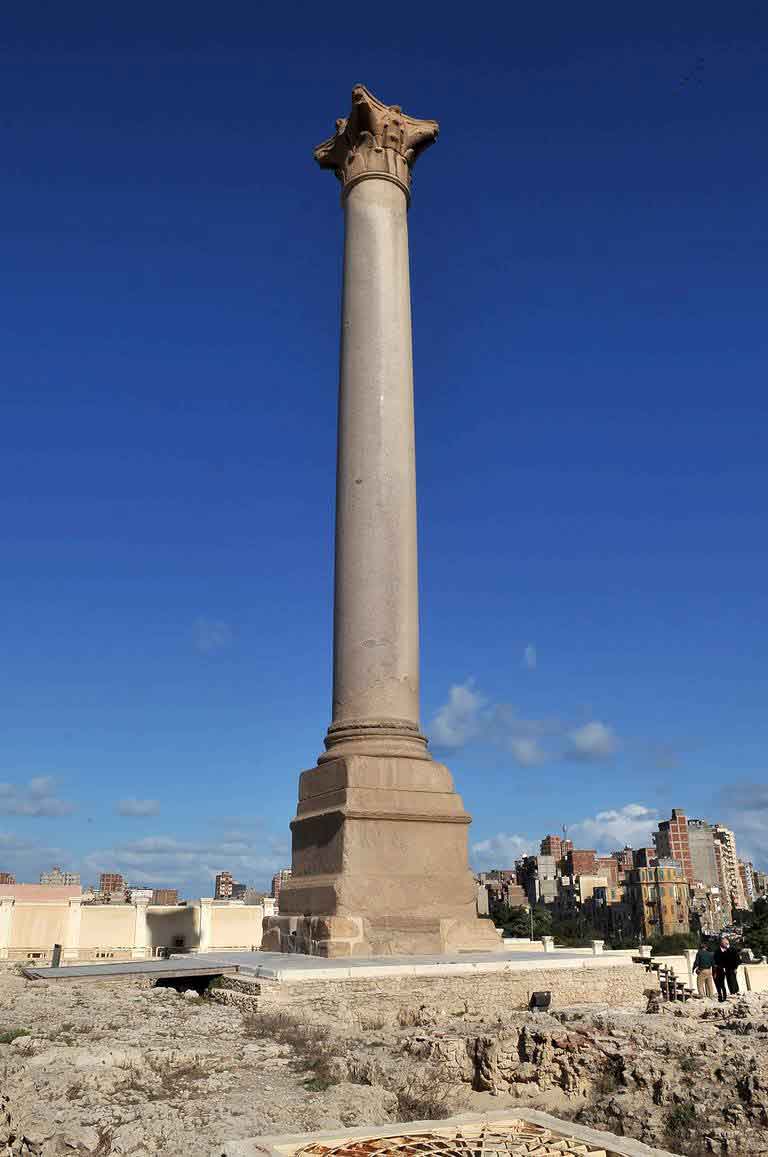
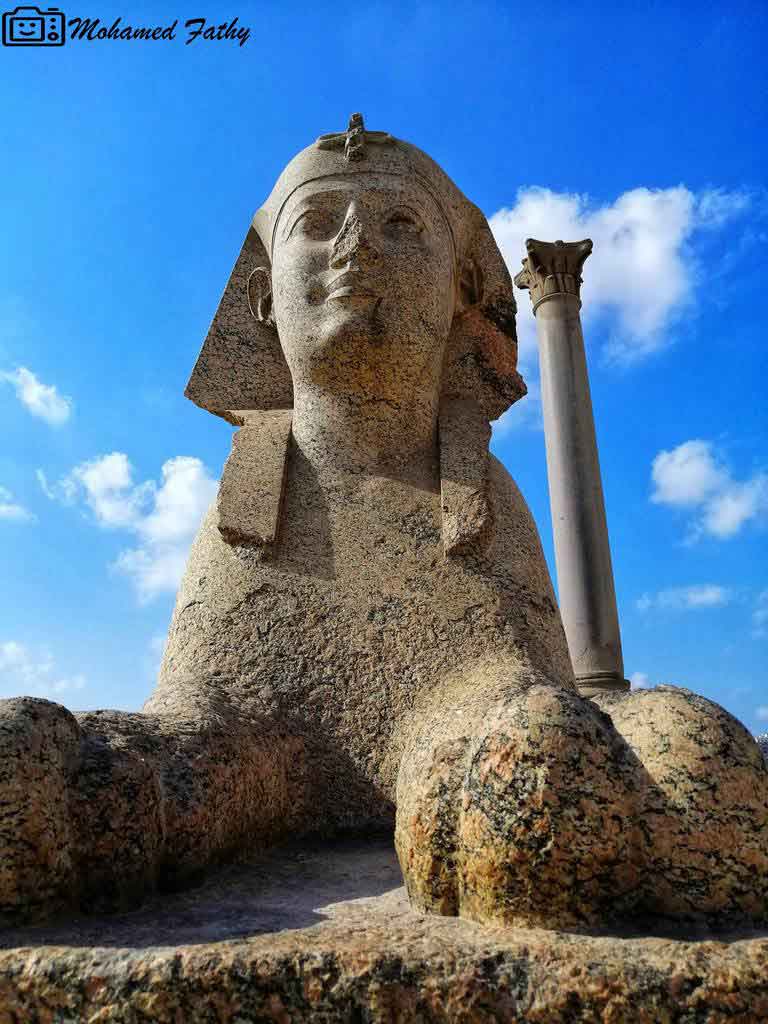
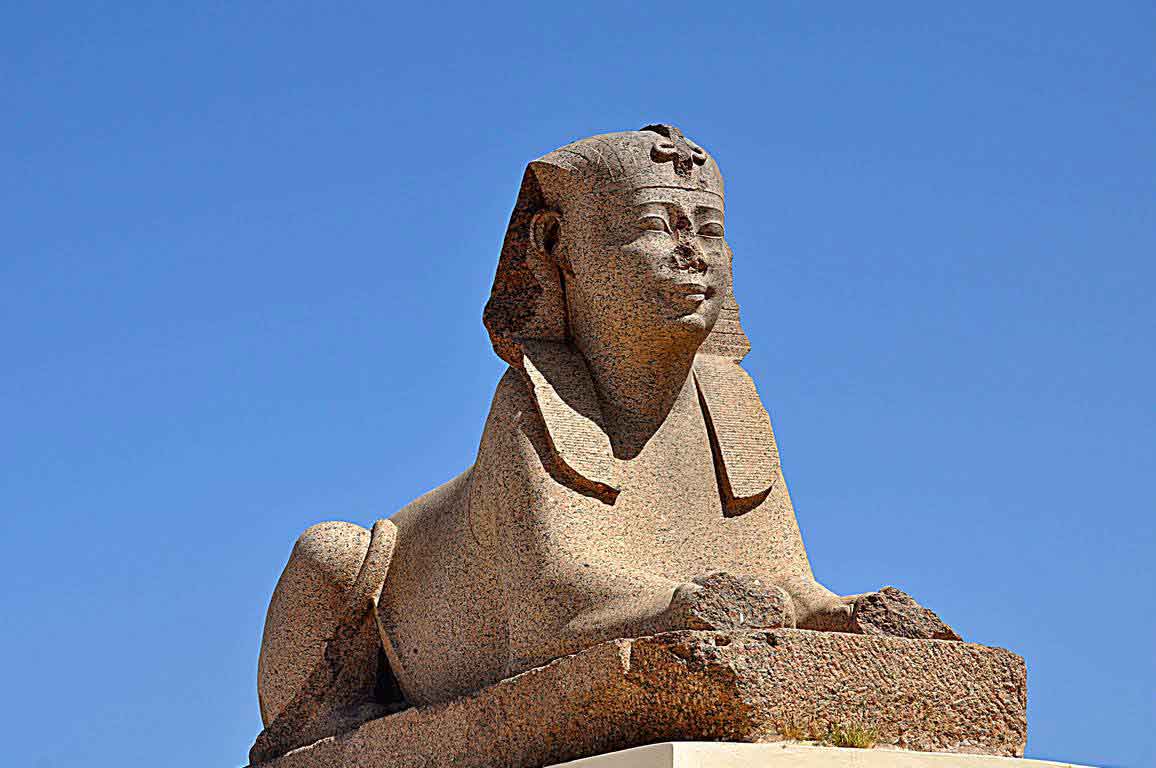
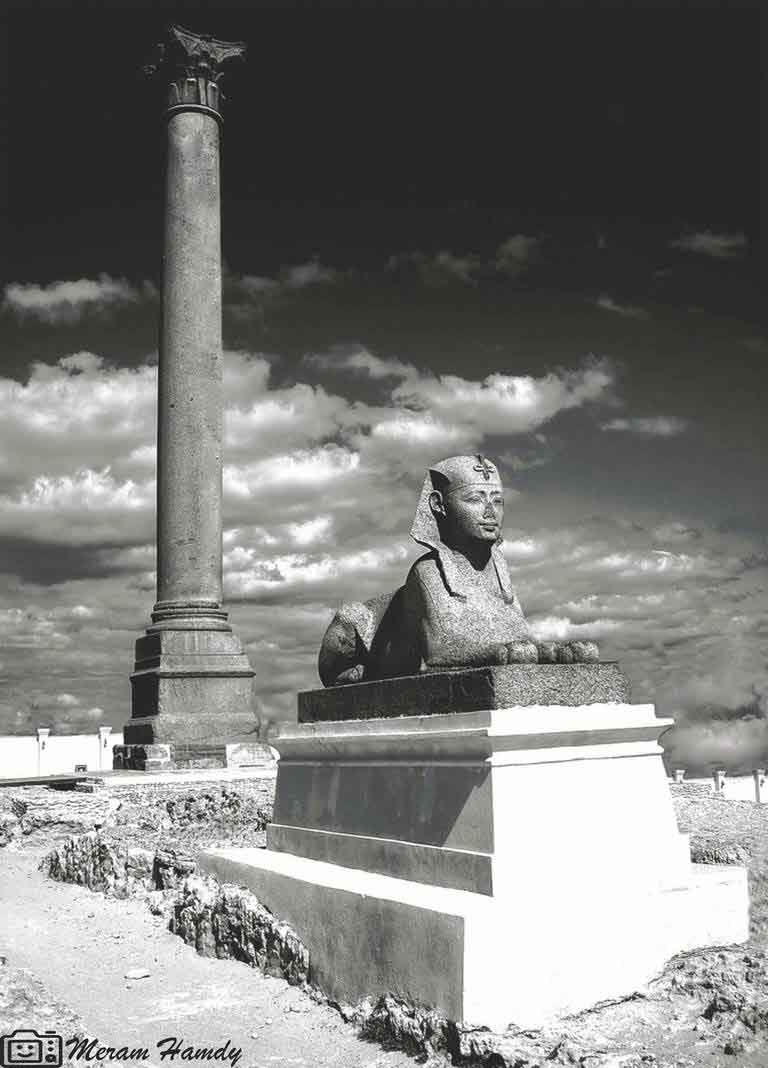


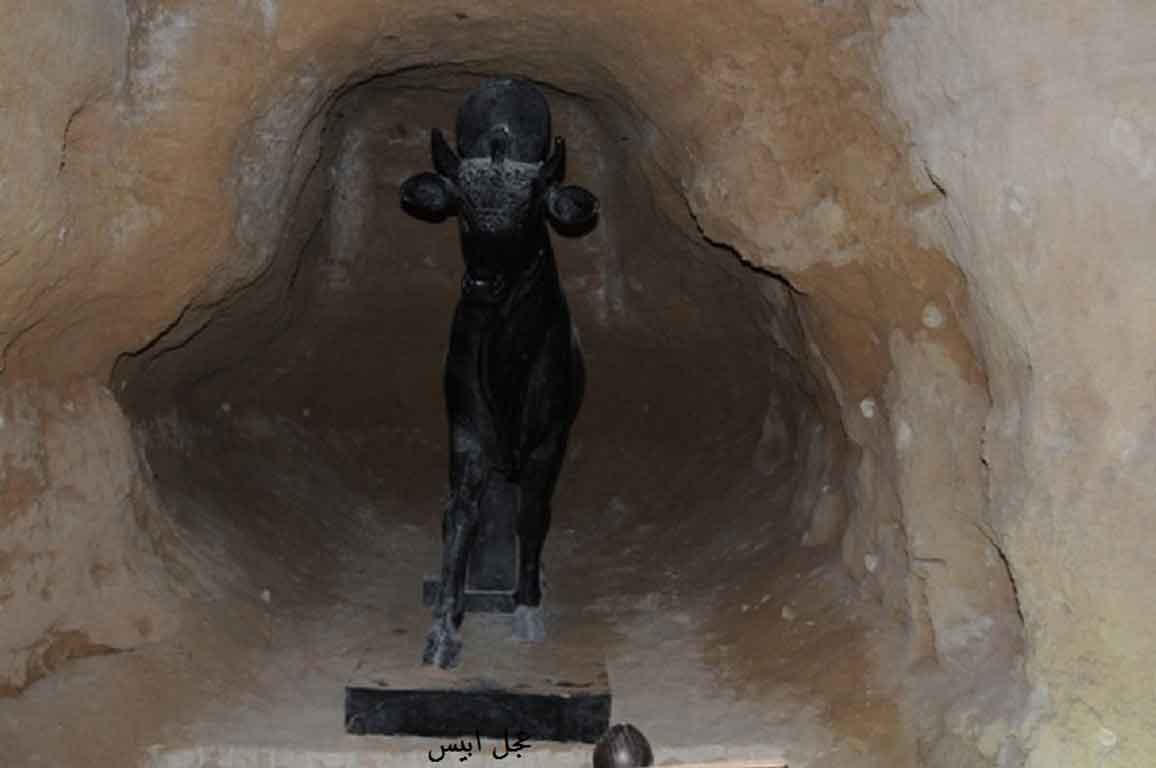
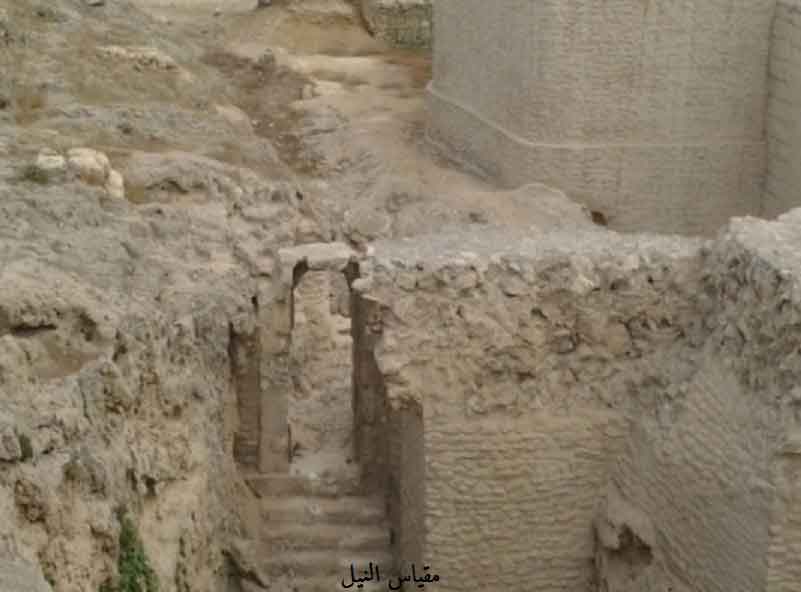
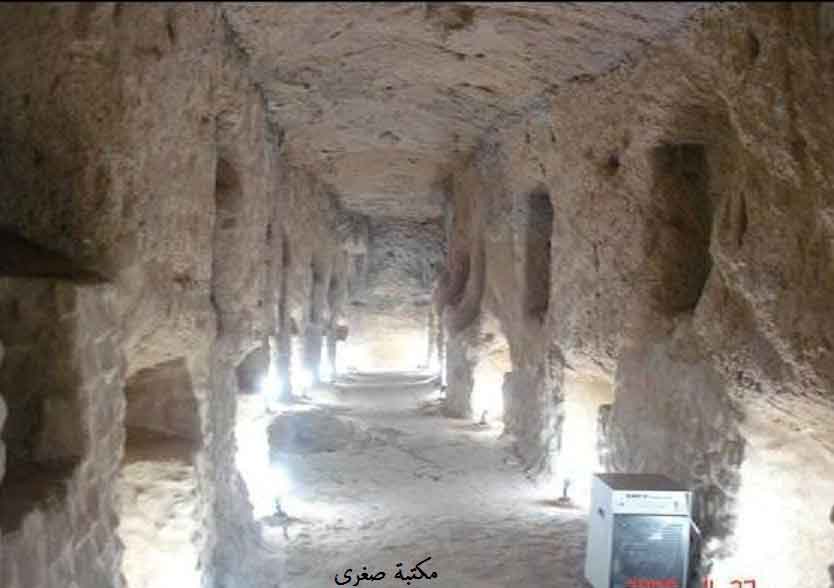
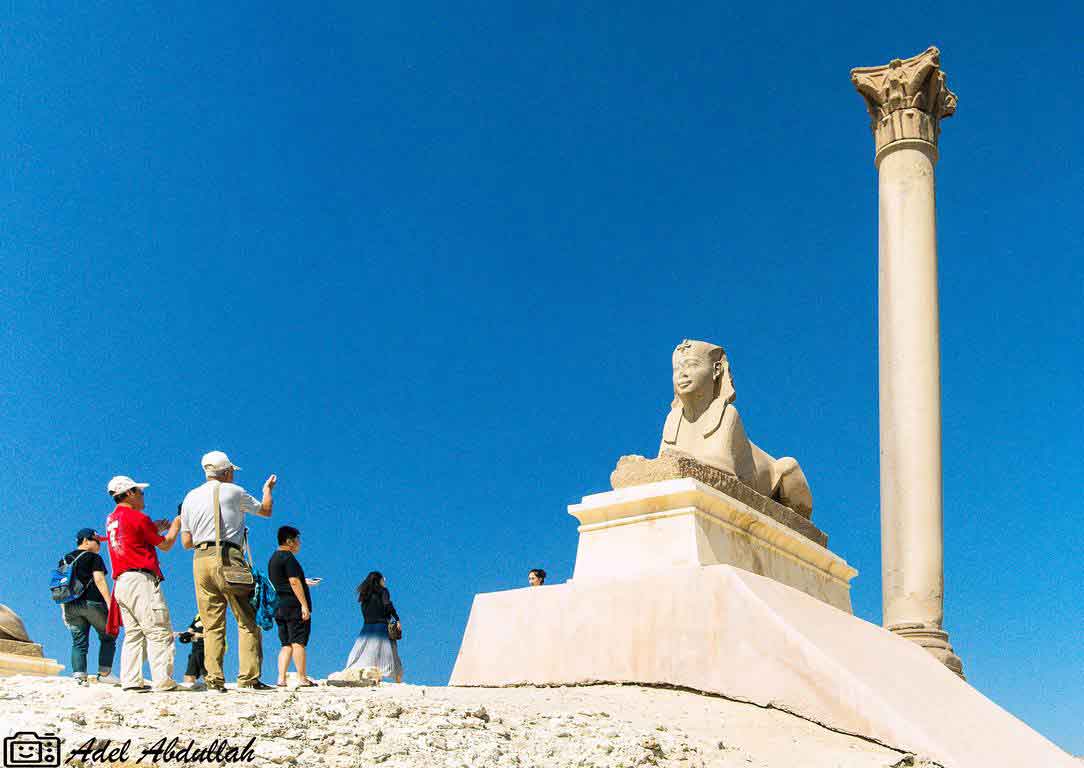
of Emperor Hadrian (117-138) and Alan discovered the foundations of the temple in 1934-1933 consisting of 10 paintings, one gold and the second silver and the third bronze and the fourth from the Nile mud, the fifth, sixth, seventh, eighth and ninth from the glass dough.
As for the tenth it was made of gold. This high hill was known as the Acropolis of the city among the Alexandrians in the Ptolemaic era, where the spread of religious temples, including the Serapeu. In the year 391 AD, after the official dissemination of the Christian religion in the state, it was abolished, remaining the foundations of the temple and the remains of the colonnades and the crypt.
It is believed to be the small library or daughter of the ancient Library of Alexandria from the ruins of the Ptolemaic period. It is preserved in the Greco-Roman Museum and in the area, there is the Nile scale, which is the water scale during the flood, and next to the column there are two statues of red granite sphinx.
Also exhibited in the area are exhibits of different times between the ancient Egyptian, Roman and Byzantine periods.
Column of Pompeii
The Pompeii column, or Diocletian's column, is 26.85 m long, destroyed at the base and consists of 3 parts, a base without pink granite crown, named after the Arabs (Al saawari - the column). a gallery with 400 pillars and one of them was called a Pompeii column because they believed it had a container with the remains of Pompeii at the top. The column has a dedication of the Emperor Diocletian on the west side of the upper part of the base, where Diocletian ordered food for the Alexandrian people after a period of deprivation, the column being transferred as a piece of granite quarry to Aswan and transported through the Nile then from the canal which supplies Alexandria with fresh water. The column is from Roman times and dates to the second half of the third century AD.
Address: Al-Sawari St., next to Al-Sawari Cemetery – Karmuz